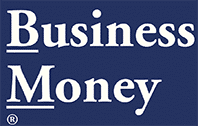Global real estate investment volumes remain resilient
$380bn was invested in global real estate in H1 2025, largely consistent with the same levels seen in H1 2024 ($376bn), says Savills in its latest ‘Takes Stock’ Global Capital Markets reports.
The international real estate advisor says that while global markets are in some respects treading water, several preconditions for a recovery in real estate investment are in place. Improved sentiment and a willingness to transact is present among both buyers and sellers, Savills reports, alongside a greater acceptance of price, and the continued strength of many occupational markets.
Looking just at Q2 2025, Savills says that a base level of activity persisted, with US$193bn of commercial real estate transacted (down 5% on Q2 2024), but the picture varied between sectors.
In the second quarter, completed office transactions totalled US$45bn globally, up nearly 12% year-on-year, with the US seeing a notable 50% increase (albeit from a low base). Savills says many reservations attached to office investment are beginning to pass, with limited supply and low development levels – especially across the US and EMEA – also bolstering the investment case, offering confidence in the outlook for sustained rental growth.
Q2 transactions in the living sector reached US$58bn, a 9% fall compared to Q2 2024, however a strong start to 2025 has left the sector up nearly 8% at the half year point with investment in the senior living sub-sector up by over 80% year-to-date at US$15bn. According to Savills, global investor demand in the living sectors remains firm, but a lack of opportunities to deploy is holding back activity in some markets.
Across the industrial and logistics market, Q2 investment of US$42bn represented a 10% decline year-on-year, however this followed three consecutive quarters of positive growth and left global H1 volumes broadly stable at $86bn (2024: $ 87bn). According to Savills, this is due to uncertainty over the scale and impact of US import tariffs hitting investor sentiment, with the shift in industrial buyer sentiment most pronounced in APAC. However, with some clarity forming over tariffs following recent trade ‘deals’, and supportive supply-side dynamics from the investor/owner perspective in many markets, Savills expects some of the pent-up demand, both in occupational and capital markets, that may have accumulated through the first half of this year to be released.
Read Savills Takes Stock Q2 2025 reports in full here.

Oliver Salmon, director – global capital markets, Savills World Research, says: “The global economic narrative remains heavily influenced by the actions of the current US administration, fuelling geopolitical volatility and uncertainty around growth prospects and tempering real estate transactions around the world. Nonetheless, in H1 we have seen pockets of growth and outperformance in certain geographies and sectors, most notably in offices where consistent income growth, high occupier demand, and low supply have down much to change the narrative about the long-term future of the office.”

Rasheed Hassan, head of global cross border investment at Savills, comments: “While institutional investors are slowly coming back to the market, they are being very specific in asset selection. This has allowed typically cash-rich private investors to continue to take a larger share of global real estate markets in 2025. Overall, the current environment favours a more discerning investor – with a clear understanding of supply-demand dynamics and comfortable with an underlying balance of risk. Investors with strong market presence and sector-specific expertise are best positioned to navigate these early cycle dynamics.”

